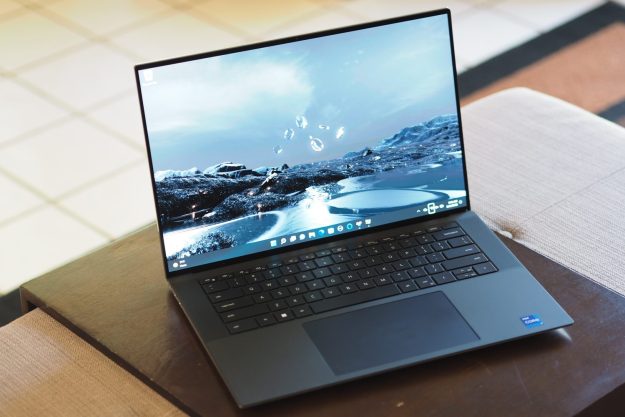
Dell has announced an upgrade to its popular XPS 15 and XPS 17 laptops, bumping up the graphics up to the latest Nvidia GPUs. Lining up with Nvidia’s own announcement, these laptops now have the latest Nvidia Studio drivers and RTX 30-series graphics.
The XPS 15 can now be configured with the RTX 3050 Ti or 3050, while the XPS 17 can handle up to the RTX 3060 (with an option for the 3050 Ti). Those might not sound overly impressive if you’re used to the higher-end GPUs found in gaming laptops, but not all versions of these laptop GPUs are made equal. Dell made it a point to note that the RTX 3060 in the XPS 17 is the 70-watt version.
The XPS 15 and 17 have always been impressive laptops for video editing and other graphics-intensive content creation, and the RTX 30-series will no doubt sweeten the deal.
Aside from graphics, these new Dell XPS laptops are strengthened by new Intel processors. They now come with the 11th-gen H45 Tiger Lake chips, which are built on Intel’s 10nm SuperFin architecture. You’ll have to pay top dollar for the Core i9 models, but the starting Core i5-11400H now comes with six cores, which is two more cores than in the previous generation. That configuration is meant for more causal use, as it doesn’t feature a discrete graphics card. If the performance holds true, they’ll likely be among the best laptops you can buy.
The XPS 15 tops out at the Core i9-11900H, while the XPS 17 gets the option for the unlocked Core i9-11900HK. Intel hasn’t specified how much overclocking will be possible in a laptop this thin just yet.

The XPS 15 and 17 remain some of the thinnest and sleekest large
The Dell XPS 17 starts at $1,450. This base configuration comes with a Core i5-11400H, integrated Intel UHD graphics, 8GB of RAM, a 256GB SSD, and a 1920 x 1200 resolution screen. The XPS 15, meanwhile, starts at $1,250 for a nearly identical configuration. Both
Dell hasn’t shared exact details on when these new
Editors' Recommendations
- 5 laptops you should buy instead of the Dell XPS 14
- The XPS 16 is fighting an uphill battle against the MacBook Pro
- Here’s why people are upset about the changes to the XPS lineup this year
- Why the most powerful laptops of 2024 might not use Intel’s latest chips
- This midrange HP laptop beats the Dell XPS 15 in one important way



